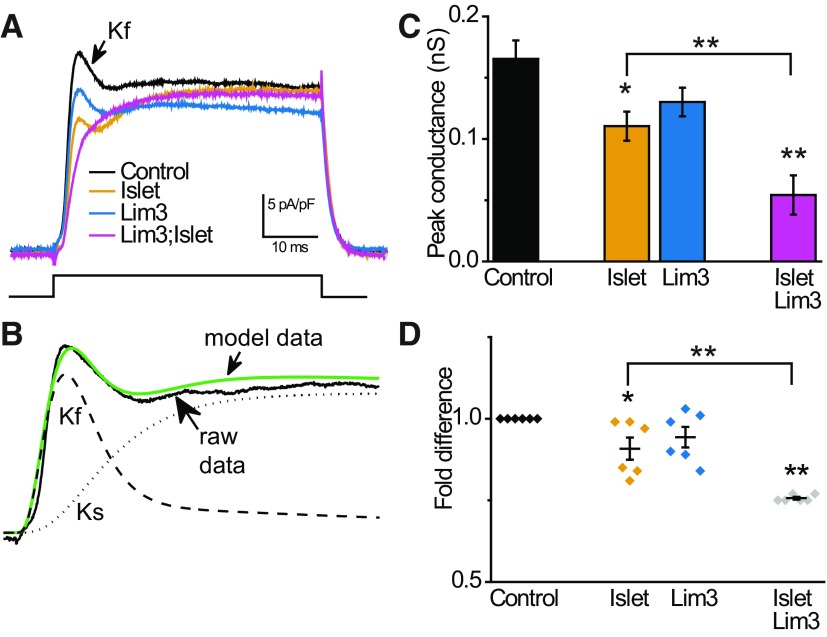Figure 3.
Islet and Lim3 act combinatorially to regulate Sh expression. A, The fast K+ current (Kf) in body wall muscle is carried entirely by the Sh channel (in conditions of low Ca2+). Traces represent membrane current produced under voltage clamp for a step from −90 to 40 mV for 50 ms in control muscle and when Isl, Lim3, or both are expressed. Recordings are normalized to cell capacitance. B, Modeling of the outward K+ conductance allows Kf (carried by Sh) and Kslow (Ks) to be differentiated. Green line indicates model fit to capacitance-adjusted data (control muscle); model-derived Kf and Ks are shown. C, Model-derived peak conductances for Kf show that expression of Isl is sufficient to suppress the Sh-dependent Kf current, whereas Lim3 expression has no statistically significant effect. Coexpression of both Isl and Lim3 further reduces Kf to a level that is significantly different from Isl. D, qPCR shows that coexpression of Isl and Lim3 reduces Sh transcript to a level significantly different from Isl expression alone. In isolation, only Isl expression significantly reduces Sh transcript levels, mirroring the effect on Sh current. Values are mean ± SEM. *p ≤ 0.05. **p ≤ 0.01.

